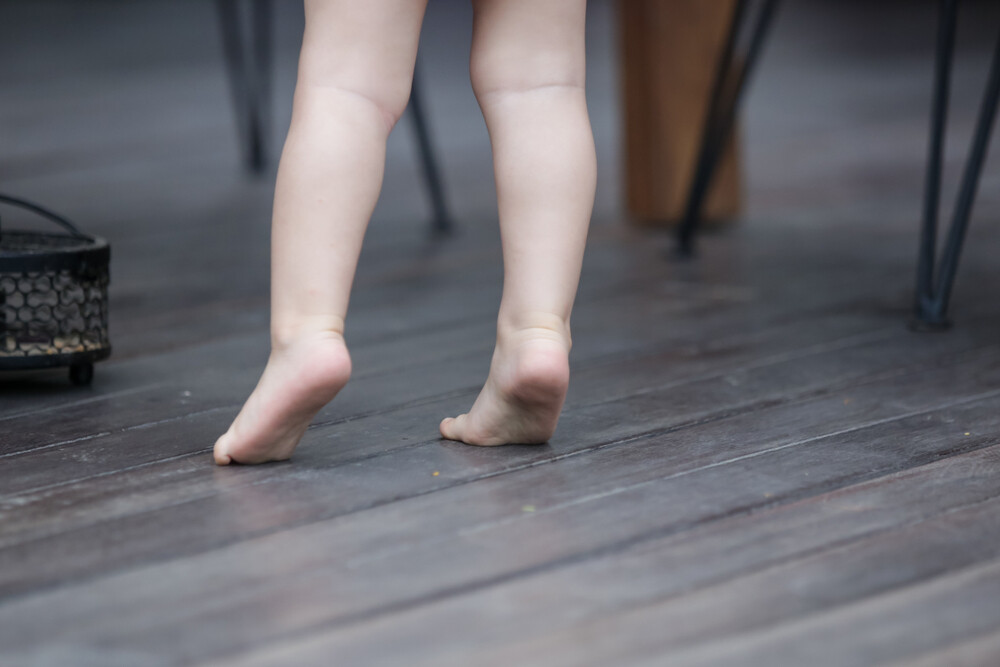We explain which symptoms require a visit to the doctor, how to recognize the toe walking (tiptoe) walk and what parents can do after the diagnosis.
In the beginning, walking on toe is just cute with small children. But if walking on the forefoot and toes then lasts longer than three months, it is a persistent (lasting) tiptoe walk and an orthopaedic surgeon/specialist should be consulted. Therapy can then be important for a child to relearn how to walk in heel walk.
What exactly is the toe walking?
If the rolling motion is omitted during walking and walking largely on the forefoot, it is a toe gait. The toes lie flat on the ground.
Who is affected?
About 5 percent of preschool age children are conspicuous by the gait anomaly.
What are the reasons for the gait pattern?
Often no real cause is found. Therefore, physicians distinguish between the habitual, i.e. habitual, tiptoe gait and the idiopathic tiptoe gait with unknown cause. With the habitual tiptoe walk, the Achilles tendon is often shortened.
Habitual toe walking is divided into three types:
- Type I Here a muscle shortening is the cause of the anomaly. Affected children have balance problems and cannot stand on the whole foot surface. This affects about one third of the tip-toe cases.
- Type II has a genetic component and therefore occurs more frequently in the family; affected persons can stand on the entire foot surface and also walk in normal heel gait. A hip dysplasia is associated with this.
- Type III is the “situational” toe walk. These children can walk normally, but fall back into the toe canal under stress.
The diagnosis
A gait analysis is performed, during which a doctor checks the child’s gait pattern. This can also be done electronically using sensors and cameras. The anatomy is examined, just as the child’s sense of balance is tested. If there is any suspicion, neurological examinations are also carried out. Only in this way can cerebral paresis (autism or mental retardation) be ruled out.
Other forms of the toe walking
If, for example, the delayed maturation of the tractus corticospinalis (strand of the spinal cord) is involved, the child can develop a normal gait pattern again at the age of six to eight years, even after tiptoeing. On the other hand, nerve and muscle diseases can also lead to a tip-toe gait only later.
Other reasons can be mental retardation, clubfoot or autism.
Treatment and development
Most children develop a completely inconspicuous gait, the heel gait, during the course of their development without medical intervention or treatment. When children learn to walk, they may initially develop a tiptoe gait. If this does not stop on its own after three to six months, a specialist should be consulted. This specialist will then rule out other causes before the toe canal is diagnosed.
Then the treatment depends on the reason for the toe walking.
Possible forms of treatment
- Physiotherapy
- Osteopathy
- Ergotherapy
- Deposits

